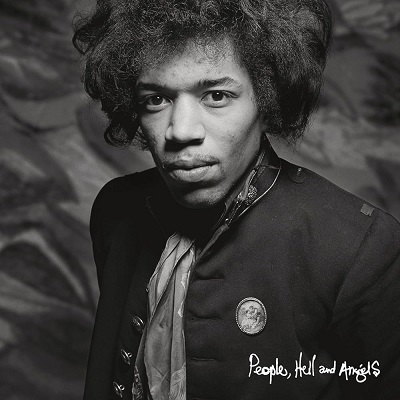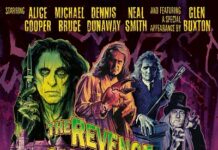If you tell anyone you just picked up the “new” Jimi Hendrix album, you will invariably hear a curt reply like, “New? I thought he was dead.” Chances are these people have been singing the same tune for the past 43 years, and bless them for their pragmatism and insight. But the music — accompanied by such precursory phrases as “previously unreleased,” “unheard versions,” “remastered” and the ever cryptic “reconstructed” — keeps coming, often lavishly packaged, under Hendrix’s name. For 2013, Experience Hendrix LLC and Legacy Recordings have put together People, Hell And Angels, boasting 12 “previously unreleased studio recordings.” Rehashed or rechristened, more missing pieces of Hendrix’s psyche offer yet another dimension of the musician’s colorful journey.
Following Electric Ladyland, Hendrix began working earnestly outside of the original Experience trio, staging impromptu jams with old friends and ensembles. His musical vision extended beyond the guitar to horns, keyboards, and percussion, and players like drummer Buddy Miles and bassist Billy Cox. We see a different side of Hendrix; in some instances, he even takes a backseat to other musicians. But certainly not on an early December 19, 1969 take of “Earth Blues” where the guitarist, Miles and Cox lock in and swing through the stanzas with easy abandon and soulfulness.
The rawness is diligently reasserted on a March 1968 run through of “Somewhere” with Miles on drums and Stephen Stills on bass (likely chosen for his proximity). The versions of “Hear My Train A Coming” and “Bleeding Heart” from May 1969 mark Hendrix’s first-ever recording session with Cox and Miles, and you hear how quickly a foundation, firmly rooted in the blues, came together. “Let Me Move You,” from March 1969, features Lonnie Youngblood on sax and vocals with Hendrix reverting back to an R&B shakedown similar to his early days as a sideman with Little Richard and the Isley Brothers. Only here, his tone is more realized and definitive.
We’ve all heard multiple version of “Izabella,” but this one features Hendrix’s buddy Larry Lee on rhythm guitar. There weren’t many guitarists with the guts to play with Hendrix, but Lee holds his own here and on “Easy Blues.” Lee, Cox and drummer Mitch Mitchell all provide a sturdy rhythm for Hendrix’s fingers to dance away across the fretboard like a bolt of lightning in Tangier. The original April 1969 recording of “Crash Landing,” with Cox and drummer Rocky Isaac of the Cherry People, is another laid-back groove that allows the guitarist to explore his craft.
On “Inside Out,” Hendrix plays both guitar and bass with Mitchell on drums. Always on the lookout for new sounds, the guitarist played the song’s lead through a Leslie organ speaker, adding a smooth, distinct cry to his edgy attack. “Gypsy Boy” is another stark and spacey number, this time with only Buddy Miles on accompaniment. It’s quite the contrast from “Mojo Man,” which has Albert and Arthur Allen out in front of a funky band recorded at Fame Studios in Muscle Shoals, Alabama. Hendrix later added guitar at Electric Lady Studios, injecting the R&B number with a rock and roll swagger.
“Villanova Junction Blues,” which finishes off the CD, is a short slice of the same May 1969 sessions as “Hear My Train A Comin’” and “Bleeding Heart.” It was undoubtedly pulled from batches of undeveloped ideas Hendrix never got a chance to complete. Indeed, as intact as most of the songs are on People, Hell And Angels, you have to wonder how many more co-producers Janie Hendrix, Eddie Kramer and John McDermott have at their disposal. Are we getting down to the bare bones? Or could more “new” music be waiting in the wings? In the words of the man himself, “I think we better wait till tomorrow…”
~ Shawn Perry




















